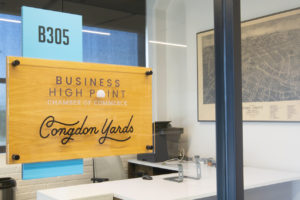Uptight Wayfinding: Getting to Where You Want to Go When You are Directionally Challenged
Since we launched Conversations about Signage, we’ve received a few emails and comments from people in the industry and readers who stumbled upon the blog that generally say something along these lines: “I never really paid attention to how important signs are or why they mattered until I got lost.”
You can substitute “lost” with confused or mis-led by directories or directional signs that displayed incorrect information or were not branded properly. The consensus from the comments is that signage should be available when you need it but signage blend in when you don’t need it…which is the rudimentary premise of architectural signage and wayfinding solutions.
However, one email requires a special post because it made everyone who read it laugh. We will share the basics of the email about this directionally-challenged person for your enjoyment.
“After I got out of college, I started working at a company in a large city. I became friends with a co-worker and we decided to share an apartment two blocks away from the office so we could walk to work and enjoy the city. The problem was, my roommate was clueless when it came to directions. Mind you — this was before hand-held GPS devices and smart phones. Each day, my roommate and I walked the same path to work – one block east, one block south to get around a gigantic skyscraper that took up two city blocks and we were at work.”

“Well, one week, I had to go out of town on business and on Monday morning, a street crew had to do emergency repairs to the street and sidewalk due to a water main break. While that is inconvenient and frustrating, the solution was easy – simply go the other way around the giant skyscraper, right?”
Not so for my directionally-clueless roommate, and the frantic phone call I got went something like this:
Me: Cell phone rings as I’m walking down the jet way to board the plane and it’s my roommate.
“Hi, what’s going on”
My roommate: “I can’t get to work, I’m going to have to call in sick, I can’t get around the construction.”
Me: “Can’t you go the other direction?”
My roommate: “No, I need you here, I’ll get lost, I don’t know how to get there.”
Me: “Just walk the other way around the skyscraper. Just head south on…”
My roommate: “Oh forget it, I’ll just call a cab.”
That’s right. A cab ride for a two block trip.That’s when I realized what “uptight wayfinding” was really about — people who can’t find their way without guidance when they have to go off the beaten path.
Exterior Wayfinding Signage, a.k.a. “Streetscape Signage”
The great equalizer to getting people to relax and feel more confident about getting to where they want to go is exterior wayfinding signage. While these kind of solutions may not have worked for this highly-directionally challenged person, we know that exterior wayfinding signage solutions have made a positive impact on citizens and visitors to cities that employ them.
For example, a beautification project that is currently being planned in the Midwest to revitalize a part of an urban area clearly includes exterior wayfinding signage:
“Recommendations included: More exterior signage, specifically to guide direct travelers to city destinations, pedestrian-friendly intersections, benches and bike racks. Banners, planters and hanging flower baskets along the street are cost-effective ways to beautify the town and draw the eye of passersby.”
In addition, the city of Edmonton is also embarking on a large revitalization project to anchored around a new sports arena. With 40 city blocks included in this massive revitalization project, one has to wonder how much exterior wayfinding and signage will play in a roll in guiding visitors throughout the area.

